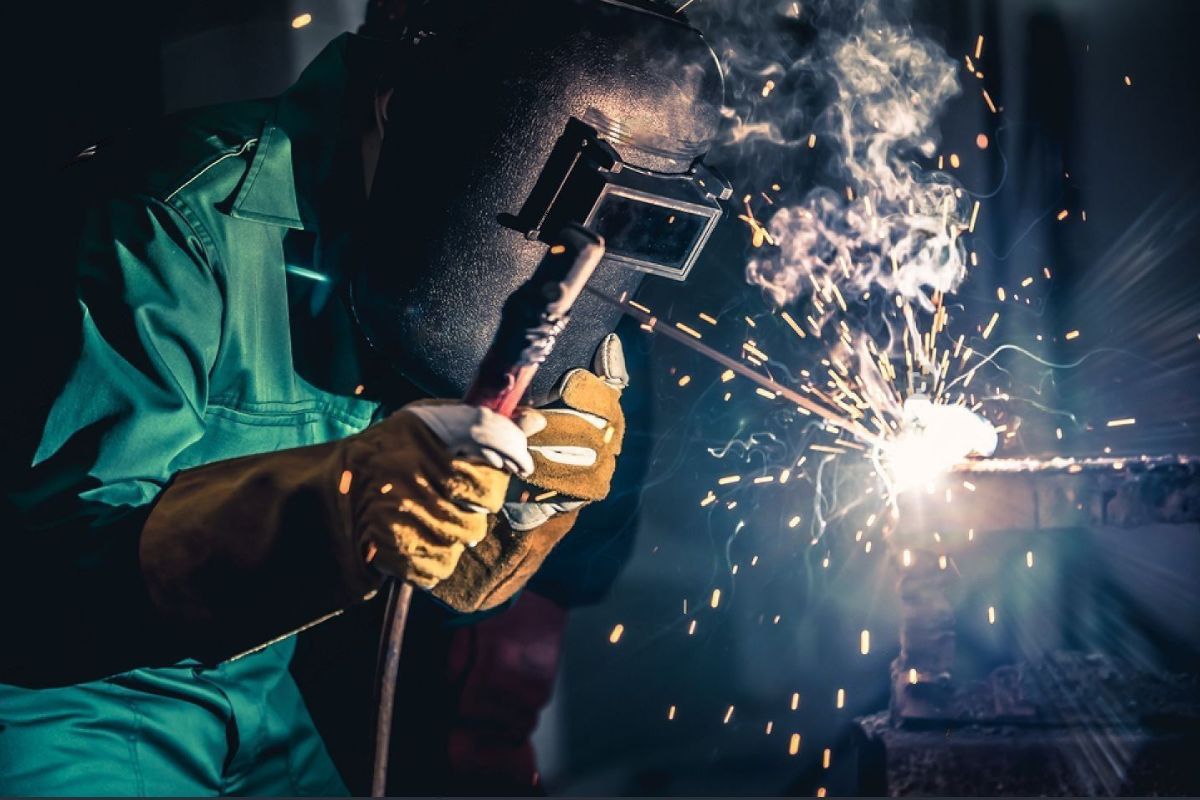Producing a Welding WPS: Step-by-Step Instructions for Professionals
Producing a Welding WPS: Step-by-Step Instructions for Professionals
Blog Article
Unlocking the Power of Welding WPS: Strategies for Performance and Security in Fabrication
In the world of manufacture, Welding Treatment Specifications (WPS) stand as the foundation of welding operations, determining the needed steps for attaining both effectiveness and safety and security in the construction procedure. Comprehending the intricacies of WPS is extremely important to harnessing its complete possibility, yet lots of organizations battle to unlock truth power that exists within these files (welding WPS). By diving into the techniques that maximize welding WPS, a world of enhanced performance and increased safety and security waits for those going to discover the nuances of this crucial aspect of fabrication

Importance of Welding WPS
The value of Welding Treatment Specs (WPS) in the manufacture industry can not be overstated. WPS act as an essential roadmap that describes the needed actions to ensure welds are carried out constantly and properly. By defining vital criteria such as welding procedures, materials, joint styles, preheat temperature levels, interpass temperature levels, filler metals, and post-weld warmth therapy requirements, WPS give a standard strategy to welding that boosts effectiveness, top quality, and safety in fabrication processes.
Adherence to WPS helps in attaining uniformity in weld quality, decreasing the probability of flaws or architectural failings. This standardization additionally promotes conformity with sector guidelines and codes, making sure that produced structures satisfy the called for safety standards. Moreover, WPS documents enables welders to replicate effective welding treatments, causing constant results across different jobs.
Essentially, the thorough growth and stringent adherence to Welding Procedure Specs are vital for maintaining the stability of welded frameworks, guarding versus prospective dangers, and supporting the credibility of fabrication firms for providing top quality services and products.
Crucial Element of Welding WPS

Enhancing Performance With WPS
When optimizing welding procedures, leveraging the crucial aspects laid out in Welding Treatment Requirements (WPS) comes to be important for improving procedures and making best use of performance. One method to improve performance with WPS is by very carefully choosing the ideal welding criteria.
In addition, appropriate training and certification of welders in understanding and carrying out WPS can better boost performance. Making certain that all employee are fluent in translating and carrying out the WPS accurately can revamp and minimize errors, conserving both time and sources. Routinely examining and upgrading the WPS to incorporate any type of lessons discovered or technological advancements can also contribute to performance improvements in welding procedures. By welcoming the standards stated in the WPS and constantly seeking means to enhance procedures, fabricators can accomplish greater efficiency levels and exceptional outcome.
Ensuring Security in Manufacture

Security protocols in manufacture play a pivotal duty in securing personnel and optimizing operational procedures. Ensuring safety in fabrication entails a complex strategy that incorporates numerous facets of the welding process. One basic element is the provision of personal protective equipment (PPE) customized to the details dangers existing in the construction environment. Welders must be outfitted with suitable equipment such as headgears, gloves, and protective clothes to mitigate threats connected with welding activities.
Additionally, adherence to appropriate air flow and fume extraction systems is critical in preserving a healthy workplace. Welding fumes have dangerous substances that, if breathed in, can pose major health and wellness risks. Carrying out effective air flow measures assists to minimize direct exposure to these hazardous fumes, advertising breathing wellness among workers.
Regular equipment maintenance and assessments are likewise essential for making sure safety in construction. Damaged machinery can cause injuries and mishaps, underscoring the value of timely fixings and regular checks. By prioritizing precaution and fostering a society of understanding, construction facilities can create a effective and safe and secure work setting for their workers.
Executing WPS Ideal Practices
To enhance functional efficiency and ensure top quality results in construction procedures, integrating Welding Procedure Requirements (WPS) finest practices is extremely important. Picking the proper welding process, filler product, and preheat temperature specified in the WPS is critical for attaining the desired weld top basics quality. Making go now sure that qualified welders with the necessary accreditations carry out the welding procedures according to the WPS guidelines is important for uniformity and integrity.
Final Thought
To conclude, welding WPS plays an essential duty in making sure effectiveness and safety and security in fabrication processes. By concentrating on vital aspects, enhancing effectiveness, and carrying out finest practices, business can maximize their welding operations. It is vital to focus on safety and security procedures to protect against crashes and ensure a smooth production procedure. By complying with these approaches, services can open the full potential of welding WPS in their construction operations.
In the world of manufacture, Welding Treatment Requirements (WPS) stand as the foundation of welding procedures, dictating the needed actions for accomplishing both efficiency and safety in the fabrication procedure. By specifying essential specifications such as welding processes, products, joint designs, preheat temperature levels, interpass temperatures, filler steels, and post-weld warm therapy needs, WPS provide a standard approach to welding that improves efficiency, top quality, and security in fabrication processes.
When maximizing welding procedures, leveraging the essential elements described in Welding Procedure Specifications (WPS) comes to be important for maximizing and simplifying procedures efficiency. (welding WPS)
Report this page